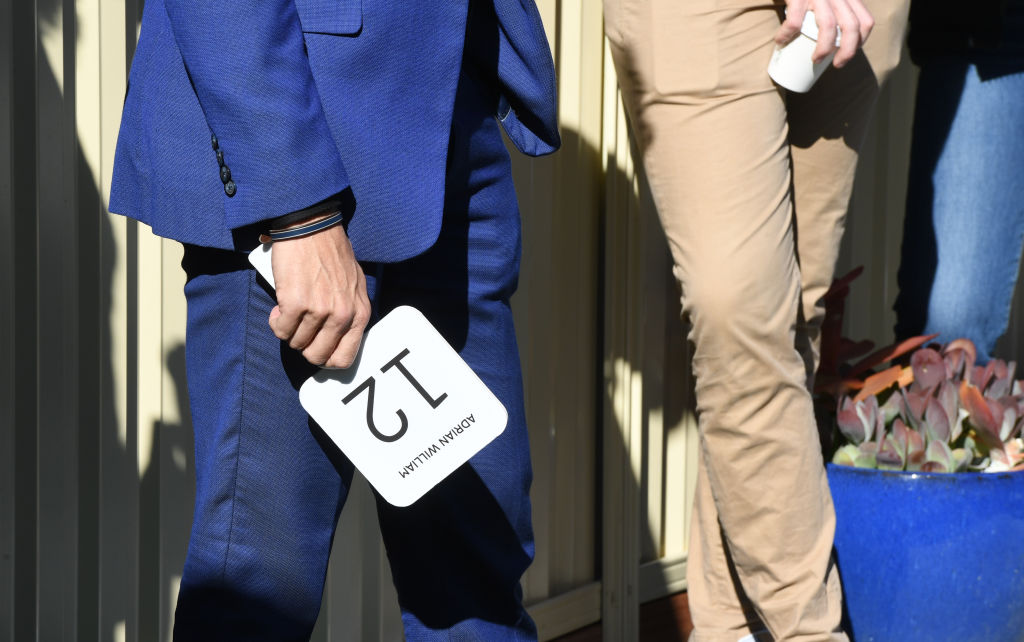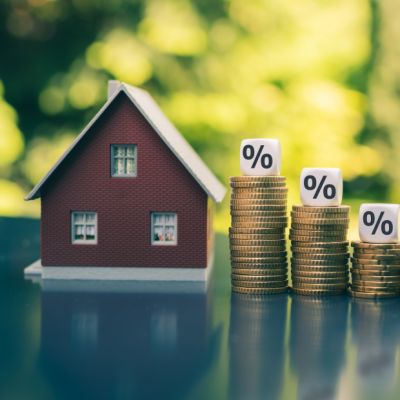Home buyers set to face higher interest rates in a few years, despite current economic setback: CBA

Home buyers are set to face rising interest rates in just a few years as the economy recovers from the setback of the latest health crisis, a senior banker has warned.
In addition, house prices are tipped to keep rising before then and could gain up to 3 to 4 per cent this spring.
The Delta-variant coronavirus outbreak has forced economists to delay predictions for a looming interest rate hike that had been in focus as the economy rebounded earlier this year.
However, Commonwealth Bank of Australia retail boss Angus Sullivan said he expected widespread vaccination rates to return the economy to normal.
The bank recently raised its serviceability rate – a measure that checks if borrowers could keep paying their home loans after hypothetical future rate rises – from 5.10 per to 5.25 per cent.
The pre-emptive move gives CBA the highest serviceability rate of the big-four lenders, and comes as the Reserve Bank and bank regulator APRA take an interest in whether borrowers are getting loans they will likely be able to repay.
“We’ve always held a high bar around making sure we meet our responsible lending obligations,” Mr Sullivan said. ”A part of that is the ongoing review of the serviceability floor to make sure that we feel that it is reflective of the forward-looking environment.
“They don’t always pay the rate that they pay today. They pay higher or lower rates into the future and, obviously, it’s prudent for us to continue to review that floor rate to make sure that it’s appropriate.”
Mr Sullivan said that a higher floor rate “flows directly through to the amount an individual can borrow”.
Less than 10 per cent of the bank’s home loan applications were lent at fixed rates 18 months ago. Now that has increased to almost 50 per cent.
As many of those loans would revert to a higher variable rate in three to four years, the floor rate needed to be raised with that expectation, he said.
“It is for exactly that reason we form a view on what we think through the cycle rate looks like given all the information we have today and then we make the decision on the lend based on that rate even if the customer takes advantage of a lower rate at the moment,” he said.
In the short term, he said he expected house prices to keep rising in the spring selling season in spite of the health challenges.
“Whether it ends up being 3 or 4 per cent or slightly less than [that], let’s see in the fullness of time what happens,” he said.
“We’re still seeing pretty good supply in the marketplace, we’re still seeing pretty good clearance rates, we’re still seeing really good expressions of interest from customers in terms of pre-approvals for their current borrowing capacity.
“Despite the current dynamic, we’re seeing a relatively persistent level of interest in the housing market.
“The fixed rates that are still available in the market give people a sense of confidence in the commitment they’re making, whether it’s one, two or four years that will hopefully underpin a good – not unsustainable, but good – level of ongoing performance of the housing market.”
After posting a 19.8 per cent rise in net profit to $8.6 billion for the year to June 30, the bank now has a strong market share of home loans with one in four mortgages held with Commonwealth Bank.
We recommend
We thought you might like
States
Capital Cities
Capital Cities - Rentals
Popular Areas
Allhomes
More










